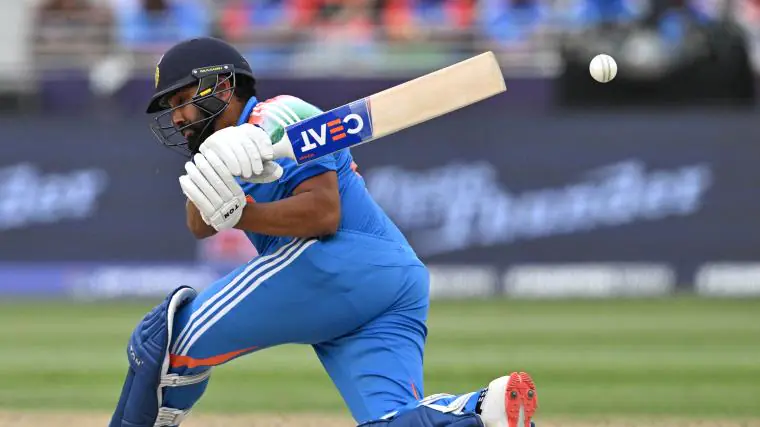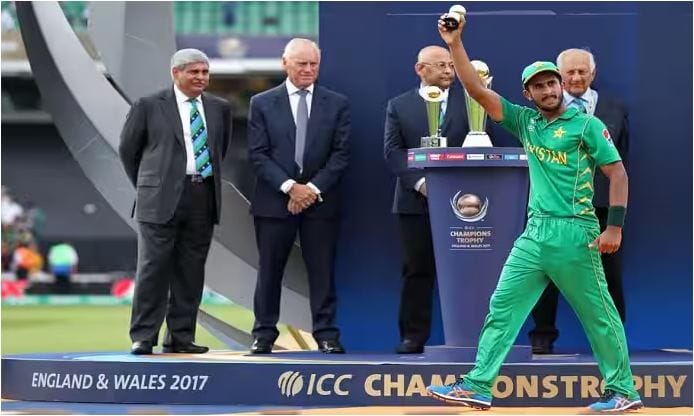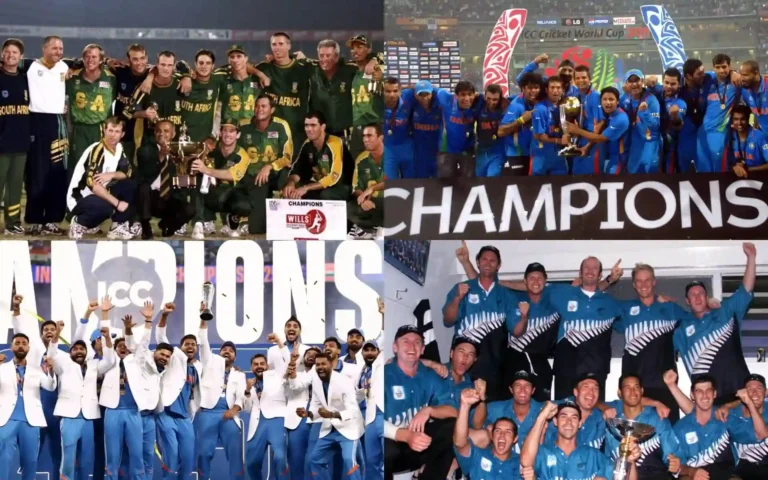
Cricket, often celebrated for its rich history and thrilling unpredictability, has consistently demonstrated how unforeseen injuries can alter the course of major tournaments. The ICC Champions Trophy 2025, returning after an eight-year hiatus, stands as one of the most anticipated events in the cricketing calendar. As teams prepare for this high-stakes competition, the potential impact of player injuries looms large, underscoring the importance of depth and adaptability in squad selection.
The Impact of Injuries in Past Tournaments
Injuries have historically played a pivotal role in altering the trajectories of cricket teams during major tournaments, often compelling teams to rethink strategies and make significant adjustments.
ICC Cricket World Cup 2011
During the 2011 ICC Cricket World Cup, a study focusing on five participating teams revealed that 12% of players sustained injuries, leading to a total of 69 missed matches. This significant loss of key players forced teams to adapt their strategies, often relying on less experienced players to fill critical roles.
Indian Premier League (IPL) 2024
The IPL 2024 season witnessed several teams grappling with the absence of key players due to injuries. For instance, the Mumbai Indians faced significant challenges with the fitness of crucial squad members, which disrupted team balance and necessitated reliance on backup players. Such situations often led to strategic overhauls, including changes in batting orders and bowling line-ups, to mitigate the impact of these absences.
Strategies to Mitigate Injury Impacts
To address the challenges posed by player injuries, IPL teams have developed sophisticated systems to maintain player fitness and manage injuries effectively. These strategies include pre-season conditioning to build strength and endurance, biomechanical assessments to identify and correct potential injury risks, and real-time recovery protocols to ensure swift and safe returns to play. Such proactive measures are crucial in preserving team performance throughout the tournament.
Key Players to Watch in 2025
The ICC Champions Trophy 2025 is set to showcase some of cricket’s most talented players. Their fitness and form will be pivotal to their respective teams’ success. Here’s a look at key players to watch:
India
- Jasprit Bumrah: India’s premier fast bowler, Bumrah, has been included in the Champions Trophy squad after recovering from back spasms. His fitness will be crucial for India’s bowling attack.
- Kuldeep Yadav: The left-arm wrist-spinner returns to the squad following a groin injury. His ability to provide breakthroughs in the middle overs adds depth to India’s spin department.
Australia
- Pat Cummins: Despite managing an ankle injury, Cummins has been named captain for the tournament. His leadership and performance with the ball are integral to Australia’s campaign.
- Josh Hazlewood: After recovering from a calf niggle, Hazlewood’s return bolsters Australia’s pace attack. His form and fitness will be key, especially in subcontinental conditions.
South Africa
- Anrich Nortje: The fast bowler has been ruled out of the tournament due to a back injury, dealing a significant blow to South Africa’s pace arsenal.
England
- Joe Root: Making a return to the ODI squad, Root’s experience and stability in the middle order will be vital for England’s batting lineup.
Pakistan
- Fakhar Zaman: The opening batter has highlighted the importance of key Indian players in the tournament, indicating his awareness of the competition. His performance at the top will be crucial for Pakistan.
The fitness levels of these players not only influence their individual performances but also significantly impact their teams’ strategies and chances in the tournament. Teams with robust bench strength and effective player management will be better positioned to navigate the challenges posed by injuries.
High-Stakes Matches and Injury Risks
The ICC Champions Trophy 2025, scheduled from February 19 to March 9, presents a demanding itinerary for participating teams, with 15 matches compressed into a 19-day period. This tight schedule necessitates teams to play multiple matches within short intervals, increasing the risk of injuries due to insufficient recovery time.
Impact of Back-to-Back Matches
Cricket is a sport that requires repetitive motions, such as bowling and batting, which can lead to overuse injuries. When matches are scheduled on consecutive days or with minimal rest, players may not have adequate time to recover, heightening the likelihood of muscle strains, joint issues, and fatigue-related injuries.
Specific Schedule Challenges
An analysis of the Champions Trophy 2025 schedule reveals instances where teams face particularly strenuous sequences:
- February 22 and 23: Australia is set to play against England on February 22 in Lahore, followed by a match against South Africa on February 25 in Rawalpindi. The travel between cities, coupled with high-intensity games, can contribute to player fatigue.
- February 23 and 24: Pakistan faces India on February 23 in Dubai, then competes against Bangladesh on February 27 in Rawalpindi. The travel and short recovery period pose challenges for maintaining peak performance.
Travel Fatigue
The tournament’s venues are spread across Pakistan and the UAE, requiring teams to travel between Karachi, Lahore, Rawalpindi, and Dubai. Frequent travel can disrupt players’ routines, contribute to physical and mental fatigue, and further elevate injury risks.
Mitigation Strategies
To navigate these challenges, teams can implement several strategies:
- Rotating Players: Utilizing the full squad depth allows key players to rest during less critical matches, reducing the risk of overuse injuries.
- Enhanced Recovery Protocols: Implementing advanced physiotherapy and recovery sessions immediately after matches can aid in quicker rehabilitation.
- Travel Management: Coordinating travel logistics to minimize disruptions and ensure players have adequate rest periods between journeys.
The Role of Fitness and Medical Teams
In preparation for high-intensity tournaments like the ICC Champions Trophy 2025, cricket teams implement comprehensive fitness and medical strategies to ensure players perform at their peak and remain injury-free. The collaborative efforts of physiotherapists, fitness coaches, and medical professionals are central to this process.
Pre-Tournament Preparation
Teams typically engage in a multi-phase training regimen leading up to major tournaments:
- Fitness Phase: Focuses on building strength, endurance, and flexibility through tailored exercise programs. This foundational phase aims to enhance overall physical conditioning, crucial for the demands of the game.
- Skill-Based Phase: Emphasizes refining technical skills, ensuring players are adept in their specific roles, be it batting, bowling, or fielding. This phase integrates physical fitness with skill execution under various conditions.
- Match Simulation: Involves practice matches that mimic tournament scenarios, allowing players to adapt to game pressures and refine strategies. This phase also aids in assessing players’ readiness and identifying areas needing improvement.
Role of Physiotherapists
Physiotherapists are integral to a cricket team’s support system, offering services that include:
- Injury Prevention: Conducting assessments to identify potential risk factors and designing personalized exercise programs to mitigate these risks. They educate players on proper techniques and the importance of warm-ups and cool-downs to prevent injuries.
- Rehabilitation: Developing and overseeing recovery plans for injured players, utilizing therapies and exercises to facilitate efficient and safe returns to play. This includes continuous monitoring and adjustments to rehabilitation protocols as needed.
- On-Field Support: Providing immediate care during matches and training sessions, addressing acute injuries, and making decisions regarding a player’s ability to continue participation. Their presence ensures that injuries are promptly and effectively managed.
Role of Fitness Coaches
Fitness coaches collaborate closely with physiotherapists and other support staff to:
- Strength and Conditioning: Implementing programs that enhance players’ physical attributes, such as power, speed, and agility, tailored to their specific roles within the team. This includes weight training, cardiovascular exercises, and drills that simulate match conditions.
- Monitoring Workloads: Tracking players’ training intensities and volumes to prevent overtraining and reduce the risk of injuries. They adjust training loads based on performance data and recovery status.
- Nutritional Guidance: Advising on diet and hydration strategies to support training adaptations and optimize performance during matches. Proper nutrition is vital for recovery and maintaining energy levels throughout the tournament.
Injury Management Protocols
Effective injury management is crucial during tournaments:
- Immediate Response: Physiotherapists provide prompt assessment and treatment of injuries during games, utilizing techniques like taping, compression, and manual therapy to manage acute issues.
- Rehabilitation Programs: Customized plans are developed for injured players, focusing on restoring function, strength, and mobility. This may involve physiotherapy sessions, strength training, and gradual reintroduction to cricket-specific activities.
- Return-to-Play Decisions: A collaborative approach involving medical staff and coaches determines when a player is fit to resume full participation, balancing the urgency of competition with long-term health considerations.
How Injuries Could Change the Course of 2025
Injuries to key players can significantly alter the dynamics of cricket tournaments like the ICC Champions Trophy 2025, affecting team combinations, morale, and strategies. Let’s explore specific scenarios to understand this impact:
Absence of a Star Batsman
Consider a situation where a leading batsman, such as Virat Kohli or Babar Azam, misses a crucial semi-final due to injury. The repercussions include:
- Batting Line-up Disruption: The team’s batting order may need restructuring, with less experienced players stepping into pivotal roles, potentially leading to instability.
- Psychological Impact: The absence of a dependable run-scorer can affect team confidence, placing additional pressure on remaining batsmen to perform.
- Strategic Adjustments: Opponents might exploit this weakness, employing aggressive bowling tactics against the reshuffled batting order.
Loss of a Key Bowler
If a premier fast bowler like Mitchell Starc or Shaheen Afridi is ruled out, teams face challenges such as:
- Weakened Bowling Attack: The loss of a strike bowler can reduce wicket-taking capabilities, allowing opposing batsmen to capitalize.
- Reliance on Inexperienced Replacements: Introducing less seasoned bowlers may lead to inconsistent performances and increased scoring opportunities for opponents.
- Tactical Revisions: Captains might need to alter field placements and bowling rotations to compensate for the missing bowler’s skills.
Impact of Bench Strength
Teams with limited bench strength are more vulnerable when injuries occur:
- Performance Drop: Substitutes may lack the experience or skill level of the injured players, leading to a decline in overall team performance.
- Strategic Constraints: Limited options can hinder the team’s ability to adapt strategies effectively against different opponents.
- Morale Issues: Continuous reliance on a thin squad can lead to player fatigue and diminished team spirit over the course of the tournament.
Case Study: England Women’s Ashes Series
In the recent Women’s Ashes series, England’s team faced challenges due to a demanding schedule and injuries. Head coach Jon Lewis criticized the chaotic itinerary, highlighting how it complicated consistent team selection and player performance. The strain led to key players missing matches, affecting team cohesion and results.
Mitigation Strategies
To address these challenges, teams can:
- Develop Robust Bench Strength: Investing in the development of reserve players ensures capable replacements are available when needed.
- Implement Rotational Policies: Regularly rotating players helps manage workloads and reduces the risk of injuries.
- Focus on Mental Resilience: Building a strong team ethos ensures that morale remains high, even when facing adversities like player injuries.
Strategies to Avoid Injury Risks
Minimizing injury risks in cricket requires a multifaceted approach that combines strategic planning, effective training, and the integration of modern technology. Here are key strategies teams and players can adopt:
1. Implement Rotation Policies
Regularly rotating players, especially bowlers, helps manage workloads and reduces the risk of overuse injuries. By ensuring that no player is overburdened, teams can maintain peak performance levels throughout the tournament. For instance, during the Ashes series, England’s strategy involves rotating bowlers to handle the demanding series, a practice that proved effective in their last successful Ashes campaign in 2010-11.
2. Prioritize Proper Rest and Recovery
Adequate rest between matches and training sessions is crucial. Implementing structured rest days and promoting quality sleep allow the body to repair and strengthen, reducing the likelihood of injuries. Additionally, incorporating cool-down exercises, such as lower-intensity jogging and stretching, after intense activity helps prevent injuries.
3. Utilize Recovery Techniques
Incorporating recovery methods like physiotherapy, massage, and hydrotherapy can alleviate muscle soreness and expedite recovery. These techniques help maintain flexibility and reduce muscle tension, contributing to overall injury prevention. Physiotherapy plays an important role in injury prevention (PREHAB), injury rehabilitation, return-to-play training post-injury, and athletic performance enhancement.
4. Leverage Modern Technology
Advancements in technology offer valuable tools for injury prevention:
- Wearable Devices: Equipment such as GPS trackers, heart rate monitors, and motion sensors monitor players’ physical metrics in real-time. These devices track running patterns and fatigue levels, assisting coaches in planning rest and preparation to prevent injuries.
- Biomechanical Analysis: Motion capture technology analyzes players’ techniques, identifying movements that may predispose them to injury. By refining these techniques, players can minimize harmful stress on their bodies.
- Data Analytics: Utilizing data analytics to monitor workload and stress levels can alert staff when a player is at risk of injury due to fatigue or overexertion. This proactive approach allows for timely interventions to prevent injuries.
5. Conduct Preseason Screening
Before the start of a season, conducting comprehensive physical assessments helps identify potential risk factors. Addressing these issues proactively through targeted training can prevent injuries during the competitive season. Preseason screenings often include testing the mobility and stability of joints, strength and power of muscles, and breathing patterns.
6. Emphasize Proper Warm-Up and Cool-Down
Establishing routines that include dynamic warm-up exercises before games and static stretching post-activity prepares muscles for exertion and aids in recovery, reducing injury risk. Warm-up exercises, such as stretching and jogging, increase blood flow to the muscles, while cool-down exercises help prevent injuries after intense activity.
In the high-stakes environment of the ICC Champions Trophy 2025, player fitness emerges as a critical determinant of team success. The rigorous demands of modern cricket necessitate that players maintain optimal physical condition to perform consistently and avoid injuries. As highlighted by cricket analyst Aakash Chopra, the selection of players with fitness concerns can significantly impact a team’s performance in such a prestigious tournament.
The importance of fitness in cricket extends beyond mere physical capability; it encompasses stamina, agility, and strength, all of which are essential for enduring long matches and maintaining peak performance under pressure. Teams that prioritize comprehensive fitness regimens are better equipped to handle the challenges of the tournament, ensuring that players can withstand the physical and mental demands of the game.
As the competition unfolds, a thought-provoking question arises: Will the team that excels in fitness, rather than solely relying on skill, ultimately lift the trophy?
Check out the Champions Trophy Stats





